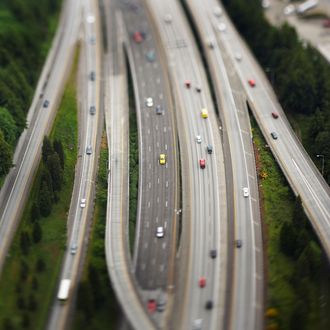
It’s all too familiar: You’re cruising down the highway, then, for no apparent reason, you suddenly run into congestion. After ten, 20 minutes, the traffic picks up again. Relieved yet curious, you glance about, searching for signs as to why traffic slowed down. But there is no closed lane, no satisfyingly fiery wreck.
As MIT engineering systems professor Richard Larson explained to Science of Us over email, “a slight perturbation can create sharp unstable response waves that grow in amplitude down the sequence of following cars.” In other words, a variance in behavior — jamming on the brakes, for instance — can cause a wave of reactions from drivers. Ultimately, Larson says, you can end up with bumper-to-bumper, ground-to-a-halt traffic, for no apparent reason.
What happened? You’ve just suffered from what queuing theory (it’s a thing) refers to as an “astable system.”
“The driver who caused the waves is long gone down the road and has no knowledge of the chaos he caused,” says Larson. Maybe the driver was checking Twitter, fussing with the music, or trying to figure out where Google Maps was telling her to go.
This loop of drivers shows how it works. Look at how the white car brakes, and the brakes cascade down the line.
That’s part of the promise of driverless cars, Larson says. If driving were automated — and the cars’ manufacturers’ played nice and allowed them to communicate with one another — cars would behave much more collectively. If programmed correctly, they’d act like attached cars on a passenger train: accelerating and braking together. No waves of tail lights, no phantom traffic jams.




